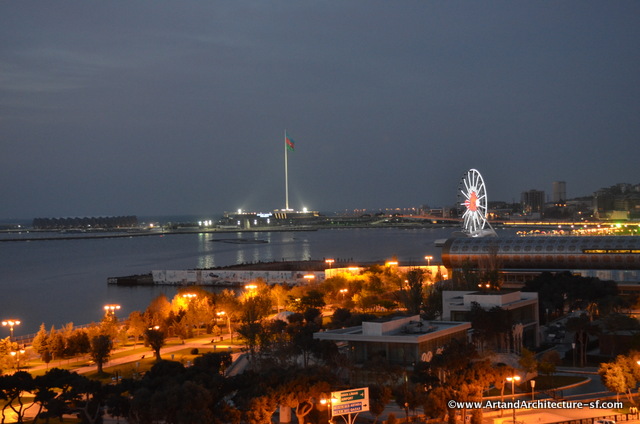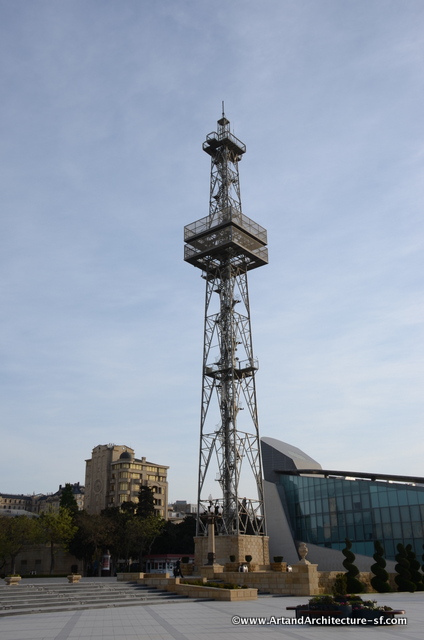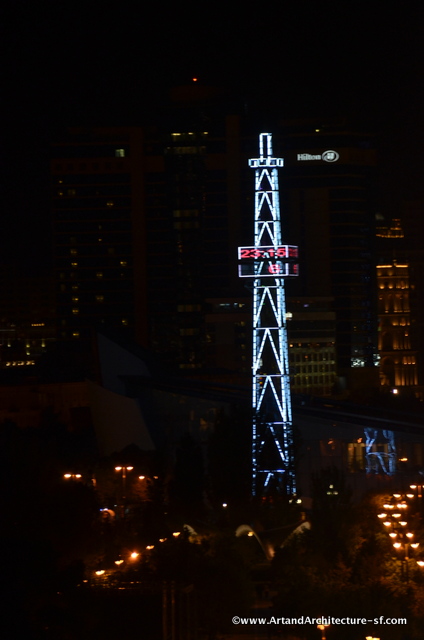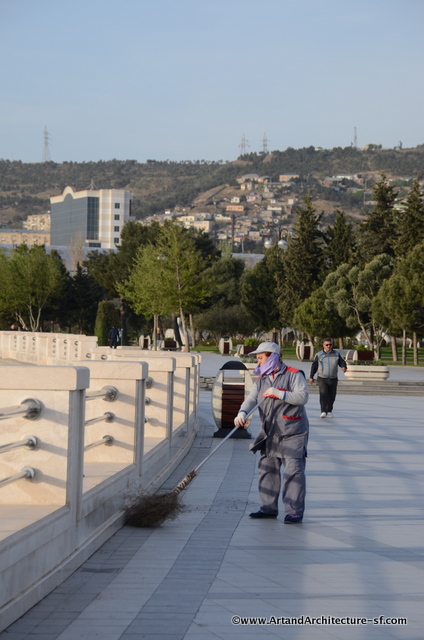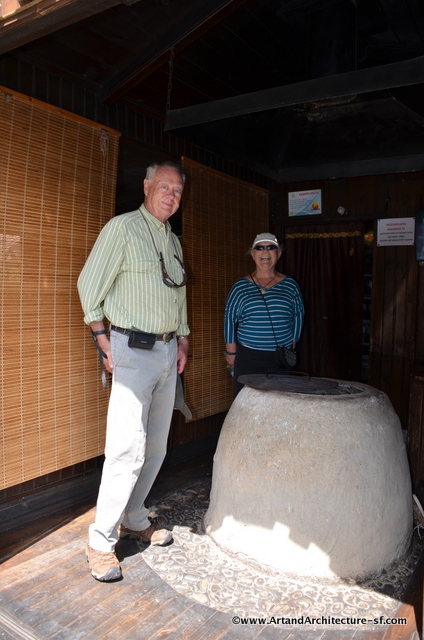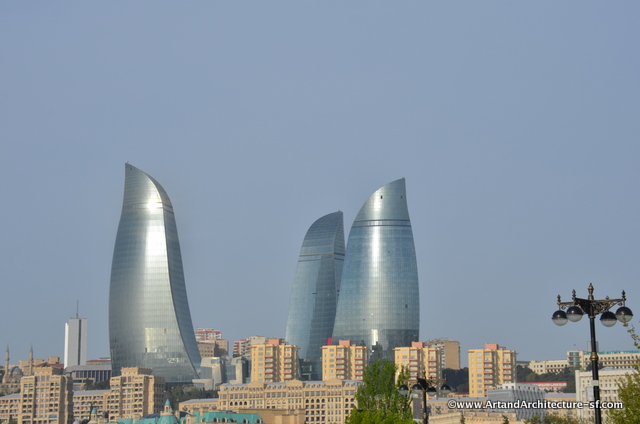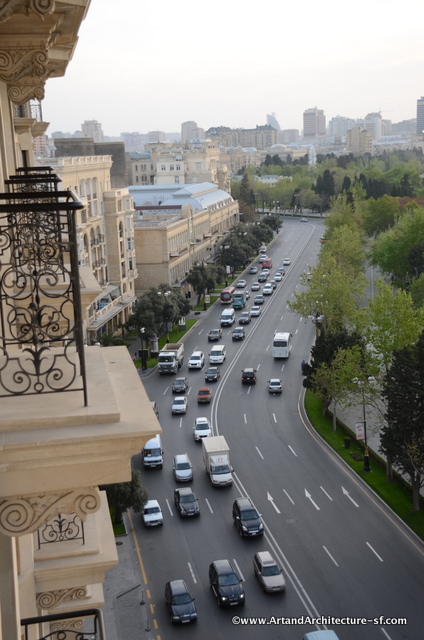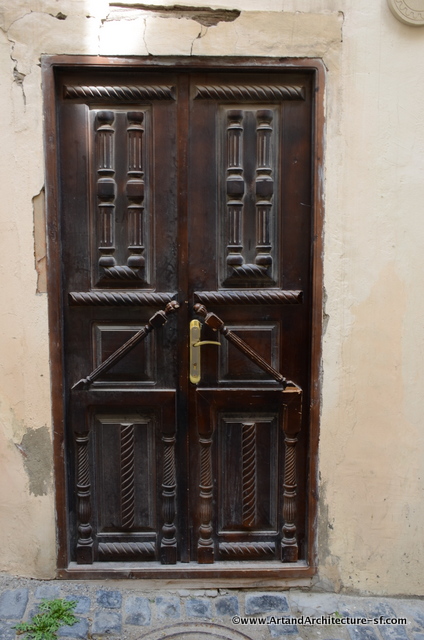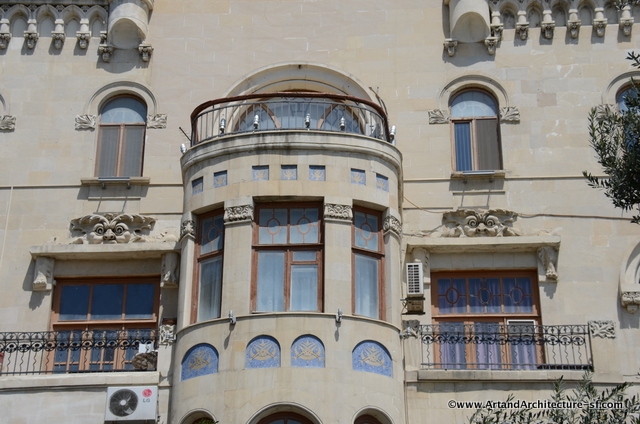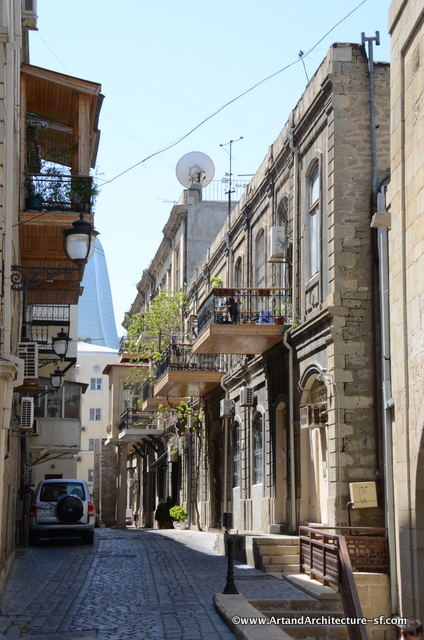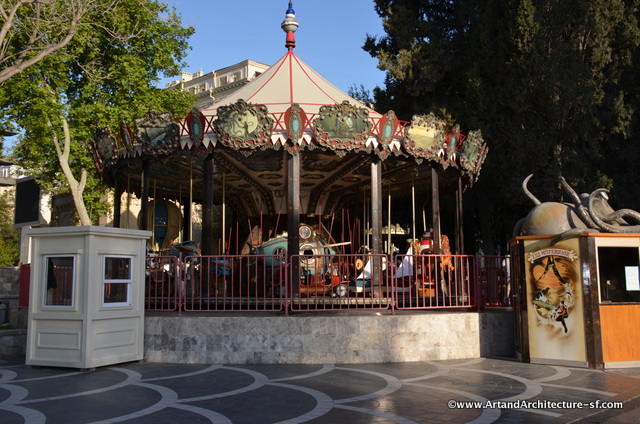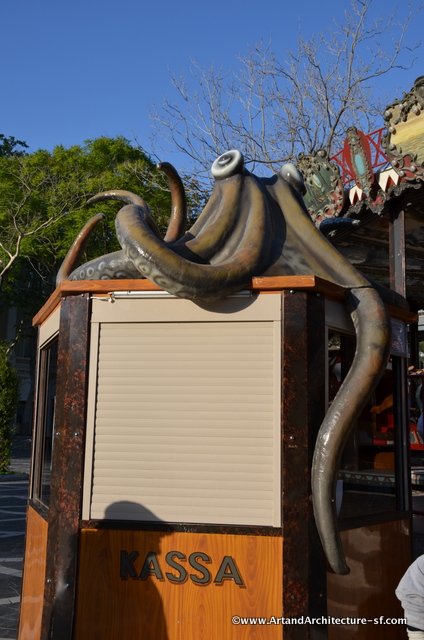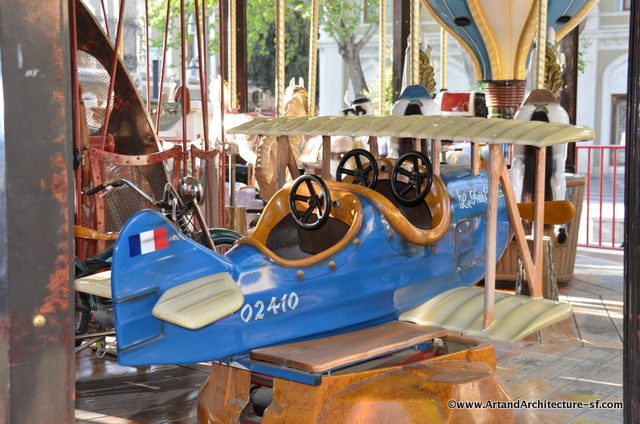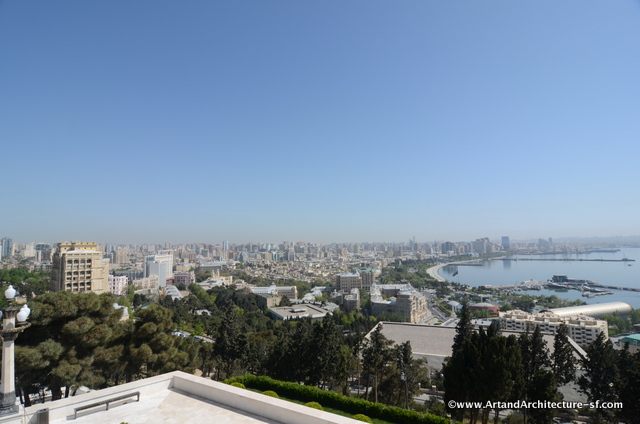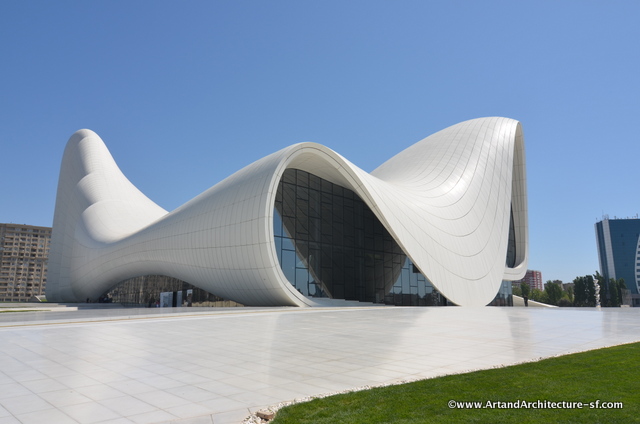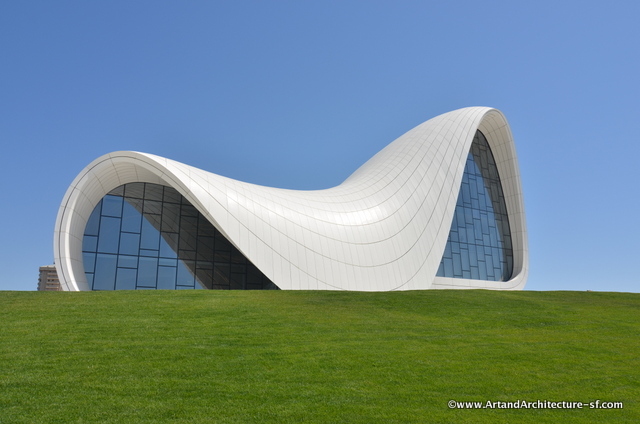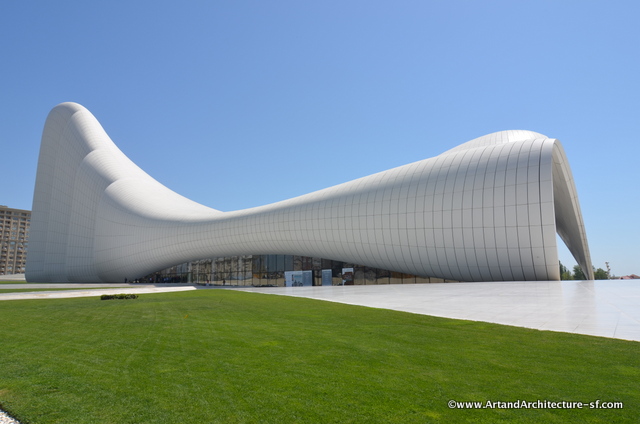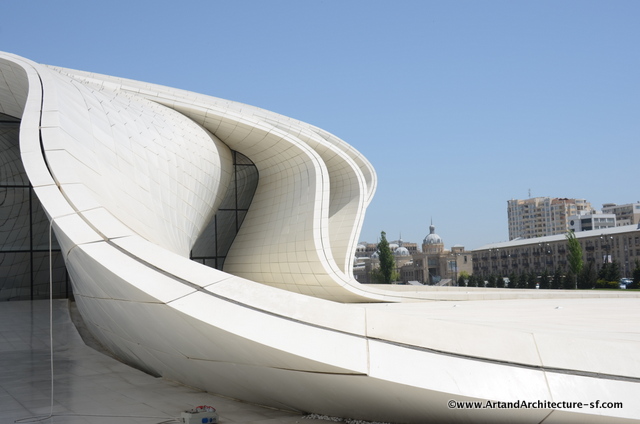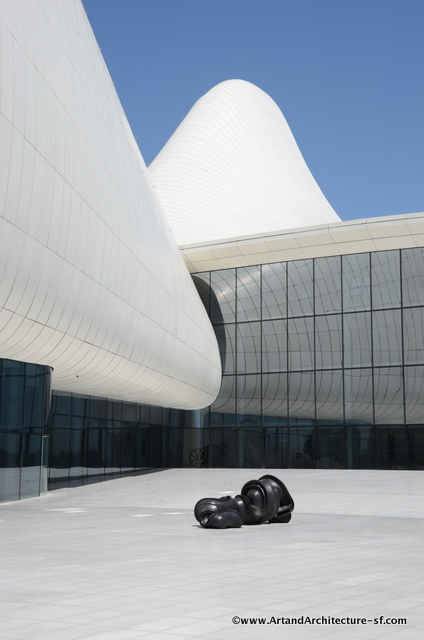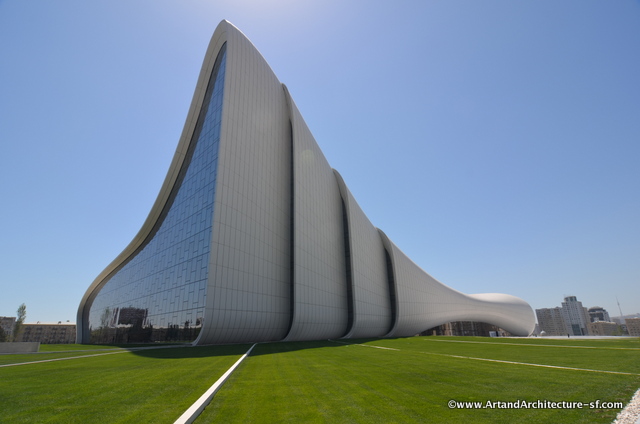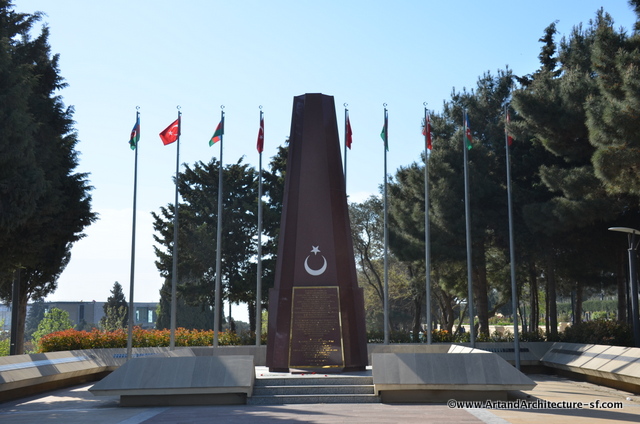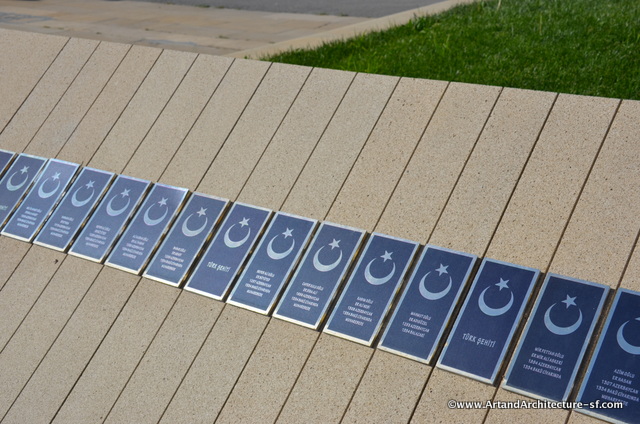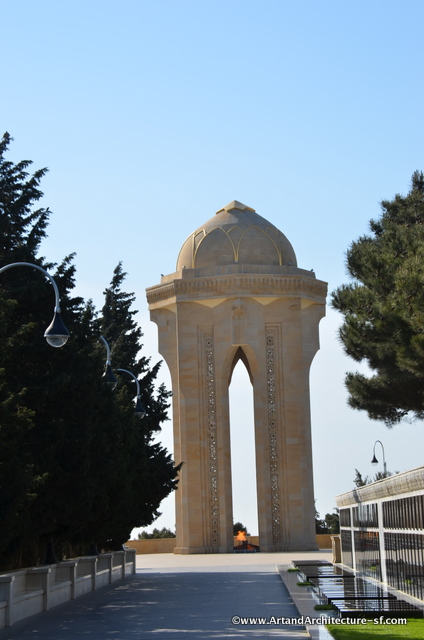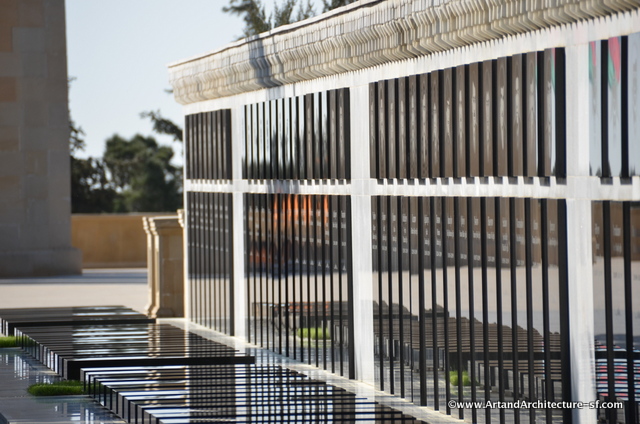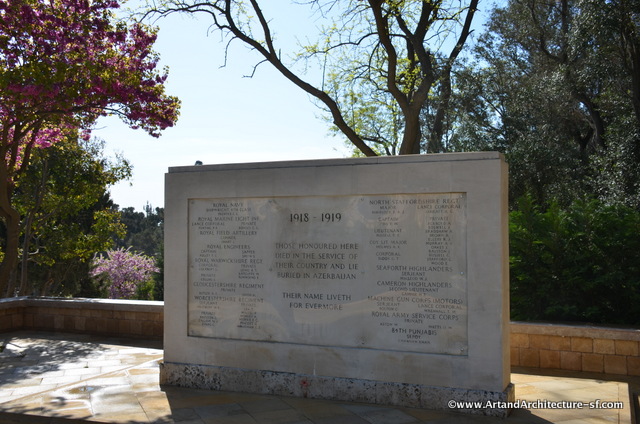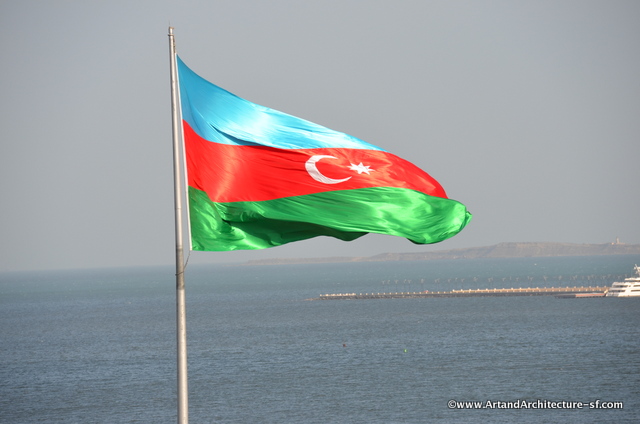May 2014
I feel like I have just stepped up to the water fountain and haven’t even had a chance to reach for a glass in the cupboard and we are leaving.
The name Azerbaijan is Persian and means “protect(or) of Fire”, which is said to have a direct link with Zoroastrianism.
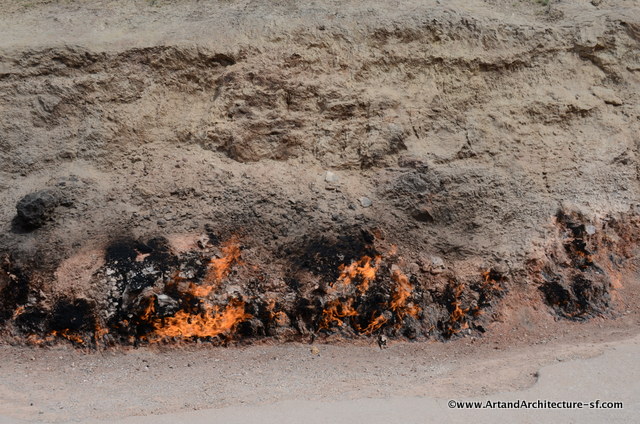
But let’s begin with our visit to Yanar Dag. The flames emanate from vents in sandstone formations and are the result of steady gas emissions from underlying soils. Even on the surface of streams near Yanar Dag, fire can be ignited with a match. These streams are known as Yanar Bulaq – “burning springs”.
These burning springs and rocks are mentioned by Alexandre Dumas, during one of his visits to the area. Only a handful of fire mountains exist today in the world, and most are located in Azerbaijan. Due to the large concentration of natural gas under the Absheron Peninsula, natural flames burned there throughout antiquity and were reported on by Marco Polo.
While I know that the above photograph looks like every fireplace in California, imagine how magical it was in the 13th century.
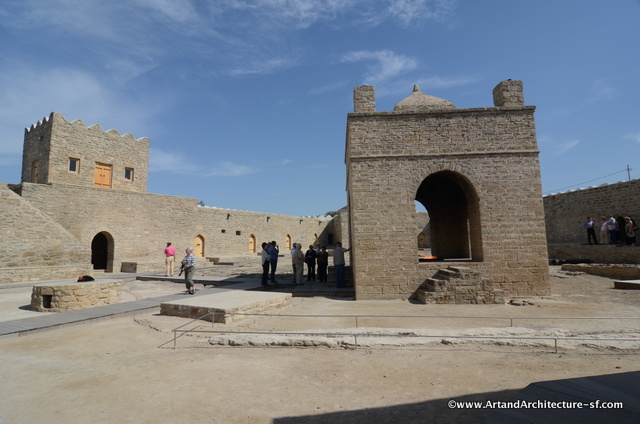
This is Atesgah, a Zoroastrian Fire Temple. Some scientists believe that the temple was built between the late 18th and early 19th centuries. The first building of the reconstructed temple dates from 1713 and later other buildings were added in the 18th century and served as cells for monks, chapels and a caravanserai, as well as a hospital and a sanctuary.
Remember, Azerbaijan “protect(or) of Fire”, which is said to have a direct link with Zoroastrianism.
Zoroastrianism is an ancient Iranian religion and a religious philosophy. It is estimated that the current number of Zoroastrians worldwide varies between 145,000 and 2.6 million. Zoroastrianism in Azerbaijan goes back to the first millennium BC or earlier.
The last worshiper left Ateshgah in 1887 and the complex fell into neglect throughout the final years of Russian Tsarism and the Soviet era. The temple was restored in 1975 and opened as a museum. In 2009 and 2011 a further restoration took place and resulted in what you see today.
As someone who spent years in restoration, I despise this type of reconstruction as you are unable to tell what is old and what is new, and you walk away with the look of Disneyland. So here are some photos showing what it looked like in an earlier century. I will grant you, not much different, but the new one is a tad too polished for my liking.
We took a trip out to Mardakan Castle. Mardakan is one of the oldest villages of the Absheron peninsula. It is named after a tribe called the Mards who lived in the area during the 1st century AD.
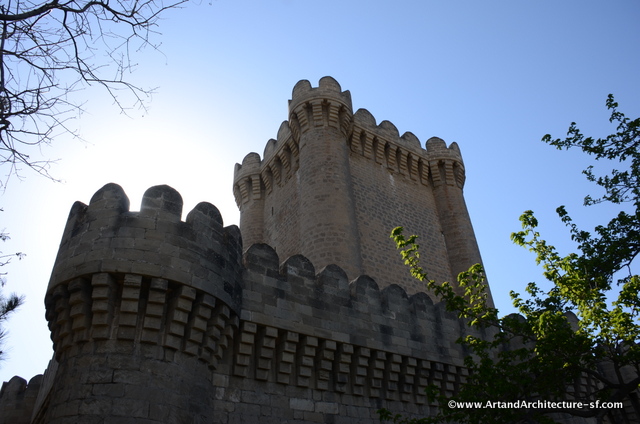
While it is a lovely castle, I believe what I took away more from it is how it really is an oil country. This is what you find as you start to leave Baku. I know that there is the sophisticated drilling that we associate with the oil industry occurring all over Azerbaijan today, but these wells are on some of the very first oil fields discovered and are still running, and also showing how destructive to the environment this type of drilling is.
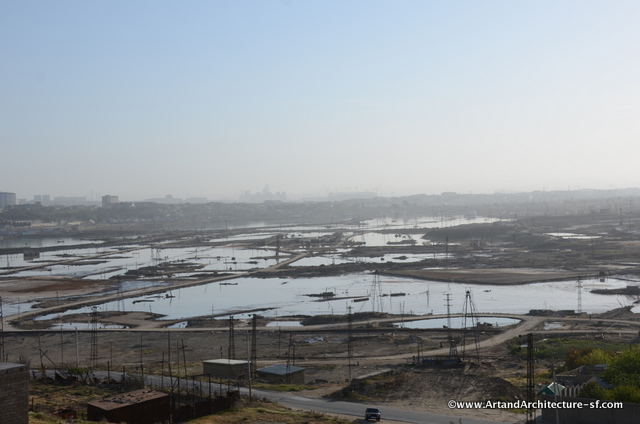 *
*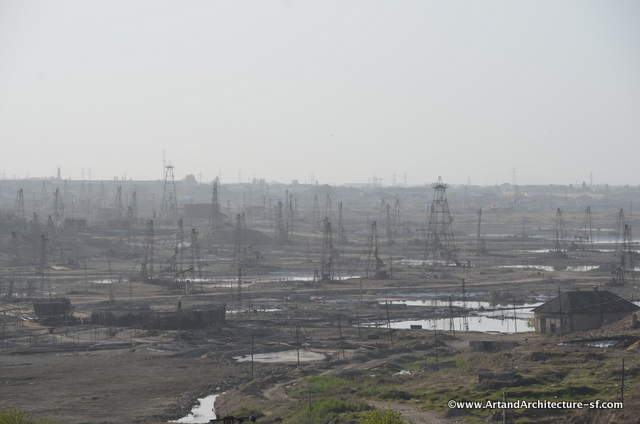
This goes on for miles and miles and miles.
We also visited Ramana Fortress, parts of which have been standing guard over this coastline since before Tamerlane invaded Azerbaijan in 1380. But what was the coolest thing was this old man. He takes care of the castle for free out of his love for the history of his region. He invited us to walk the battlements and it was scary but a heck of a lot of fun!


The last of our trip consisted of a trip out to the petroglyphs of Gobustan,
Caesar never actually visited the petroglyphs as far as I know, but the Caspian Sea rises and falls throughout the millennia and at one time the sea was much farther inland. So Caesar made sure that the world knew he had been here.
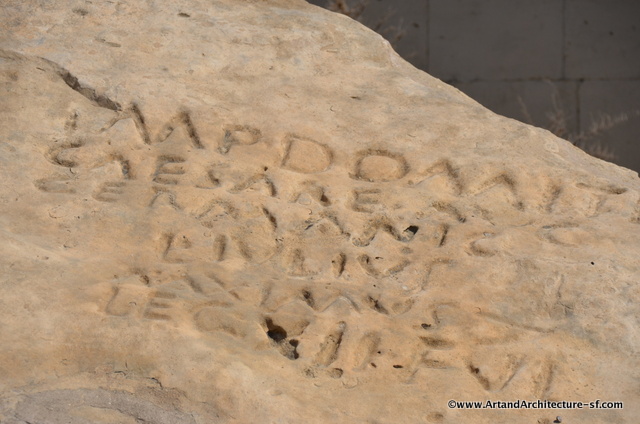
“The time of Emperor Domitianus Caesar Augustus Germanicus, Lucius Julius Maxim, Centurion XII of the Lightning Legion”
We had a delightful surprise visit to the home of the Nobel family, known to the entire world because of the one brother Alfred, that created the Nobel Prize after a successful run in the chemical business. However, in Azerbaijan the other two brothers Robert and Ludwig, are better known for being some of the richest oil barons of Baku.
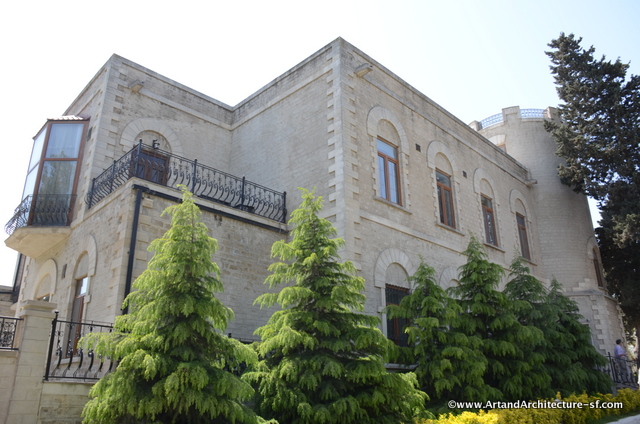
So…some wrap up thoughts about Azerbaijan. The country is secular but predominately Muslim. Having said that, you would not know that. There are no mosques (with the exception of a few with historical significance) and no call to prayer. Alcohol is served, and there was pork sausage at morning breakfast.
We ran into so many people that truly did not know why we were there visiting their country. It is difficult to get a visa to the country; while you can apply on-line it takes over a month, which requires some serious planning.
The Azerbaijan Manat is essentially equal to the Euro so it is not cheap, and you do not come to sit by the beach. However, the people are friendly and their history is rich. Sadly, thanks to a Soviet influence service is still indifferent and sometimes surly.

Statue outside a restaurant along the Caspian Sea
Azerbaijan is heading down the path of Dubai with a new island being developed with 12 palm leaves for high-end homes restaurants hotels and shopping.
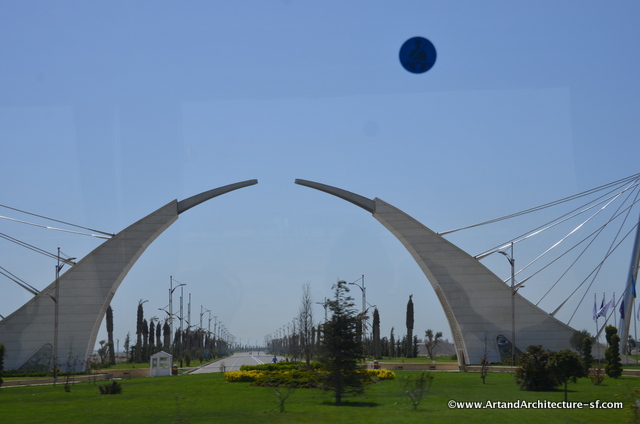
The Entryway to this new man-made Island This photo was taken out of the bus, hence the big blue dot.
Their GDP is higher than the other two countries (Georgia and Armenia) of the Caucasus because they are the one country rich with oil and natural gas. Their education levels are high, and their number one friendship in the world right now is with the US, followed closely with the EU and Israel. Cultural and educational exchanges are occurring regularly now that they are independent and we even ran into three U.S. Army men in our hotel this morning here to help with training exercises as the Azerbaijani work to be accepted into NATO. Something that will happen when hell freezes over as long as Russia is part of the UN. All three countries, however, are doing what they can to become part of the EU.
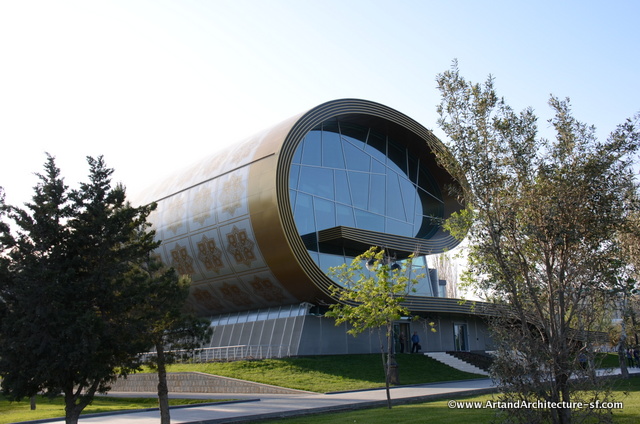
The new Carpet Museum
Azerbaijan had a classic oil economy prior to WWI and then the Soviets took over turning it into one of its republics. In the 20 some years since its independence the country has taken those petrol dollars and done amazing things.
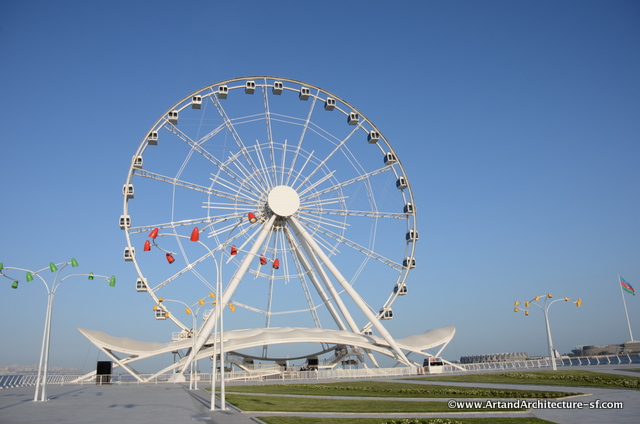
They have poured them back into the economy and at least the city of Baku is as modern day a city as one can imagine. At the same time, they must pour dollars into a military establishment to keep up a front against Armenia.
Historic Maiden Tower. No one really knows what it is for but it dates from the 12 Century
They have hosted a European World Song Fest which I am told is huge, and they are getting ready to host the European Games in 2015. I will be anxious to see if they attempt in the future, to develop an economy outside of oil.
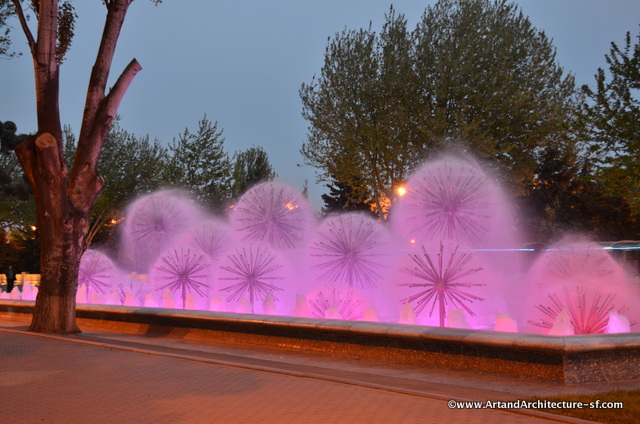
I am an avid reader and try very hard to read as much as I can regarding a country before going. There was not much to get my hands on that I felt wasn’t also difficult to wade through. Prior to leaving on this trip, I read
The Ghost of Freedom: A History of the Caucasus by Charles King, is a wonderfully informative book, but as I said a tad thick to get through. Upon my return I read
The Orientalist by Tom Reiss, while only the first few chapters are about Azerbaijan in particular, the book is an absolutely fascinating read and well worth picking up.
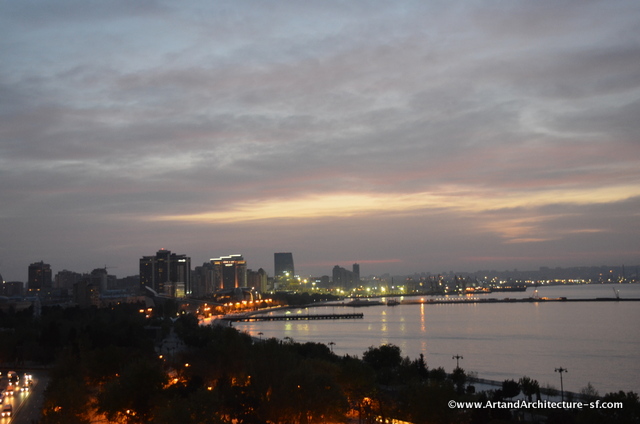 The day began with a walk down Baku Boulevard, also known as National Park. It is a promenade established in 1909 and runs parallel to the waterfront. Its history goes back more than 100 years, to a time when Baku oil barons built their mansions along the Caspian shore.
The day began with a walk down Baku Boulevard, also known as National Park. It is a promenade established in 1909 and runs parallel to the waterfront. Its history goes back more than 100 years, to a time when Baku oil barons built their mansions along the Caspian shore.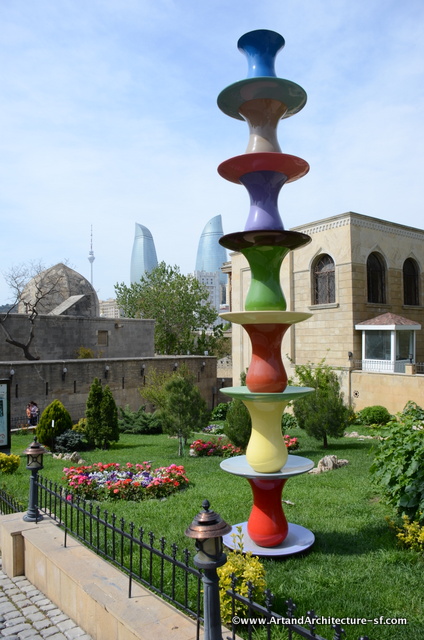 I did find lots of great public art, however. This is a stack of Armudu, Azerbaijan tea cups called the Twelve Beauties.
I did find lots of great public art, however. This is a stack of Armudu, Azerbaijan tea cups called the Twelve Beauties.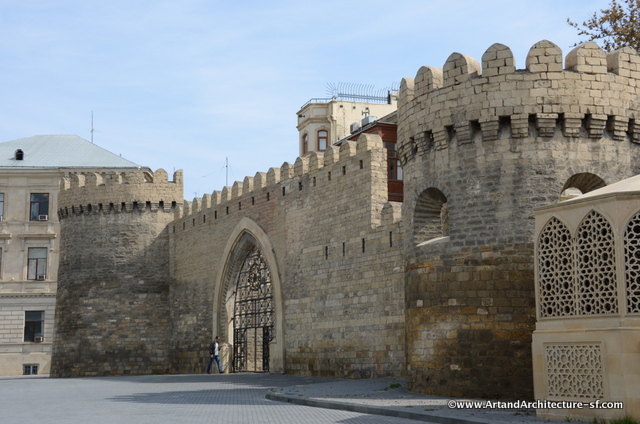 The Inner Walled City is one of the few surviving medieval towns in Azerbaijan. It retains the characteristic features of a medieval town, such as the labyrinth of narrow streets, congested buildings, and tiny courtyards. The walls of the old town, which still survive on the western and northern sides, were built by Menutsshochr Shah in the 12th century and were repaired in the 19th century. In fact, there have been many repairs on the walls and archaeological exploration within the old town itself are still occurring. The narrow streets are lined with houses dating from the late 18th century onwards.
The Inner Walled City is one of the few surviving medieval towns in Azerbaijan. It retains the characteristic features of a medieval town, such as the labyrinth of narrow streets, congested buildings, and tiny courtyards. The walls of the old town, which still survive on the western and northern sides, were built by Menutsshochr Shah in the 12th century and were repaired in the 19th century. In fact, there have been many repairs on the walls and archaeological exploration within the old town itself are still occurring. The narrow streets are lined with houses dating from the late 18th century onwards.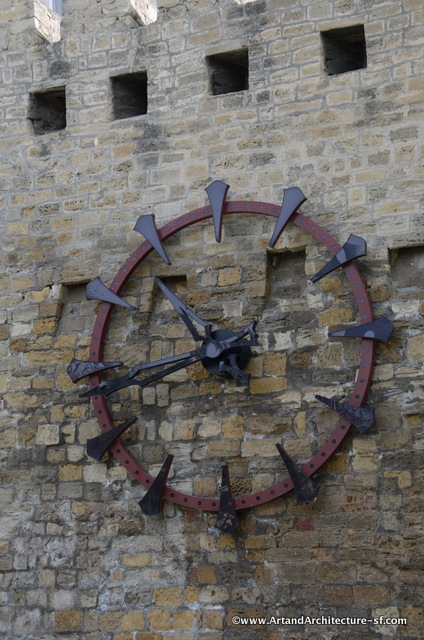 We had been told by the concierge to go to one of the three restaurants that bake the Azerbaijan bread as you order it, so that was our morning snack with tea.
We had been told by the concierge to go to one of the three restaurants that bake the Azerbaijan bread as you order it, so that was our morning snack with tea.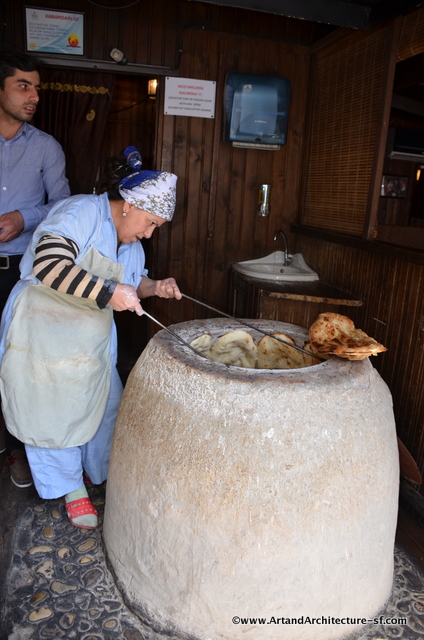 Notice how HUGE the loaves of bread are, I am pretty sure we left at least 1/3 of our loaf behind. Oh, and by the way it was 1 Manat which is equal to about $1.28
Notice how HUGE the loaves of bread are, I am pretty sure we left at least 1/3 of our loaf behind. Oh, and by the way it was 1 Manat which is equal to about $1.28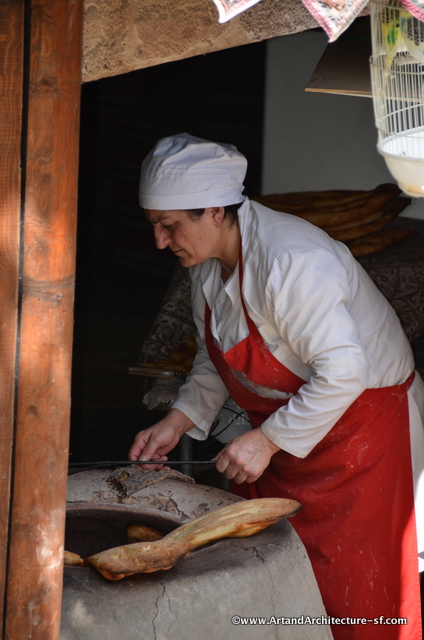
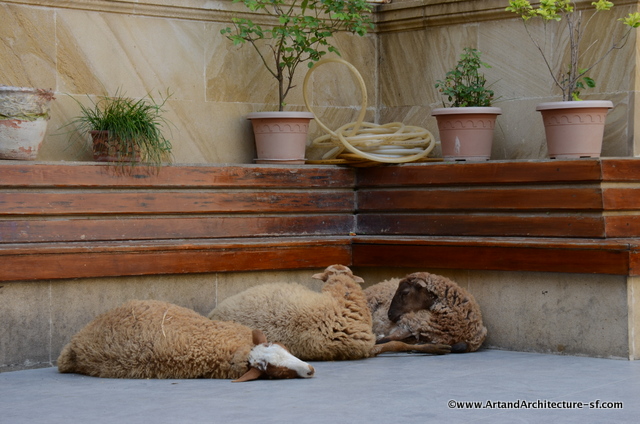 We have no idea why these three sheep were lazing in this little alcove, but we thought them rather cute. Possibly tonight’s dinner?
We have no idea why these three sheep were lazing in this little alcove, but we thought them rather cute. Possibly tonight’s dinner?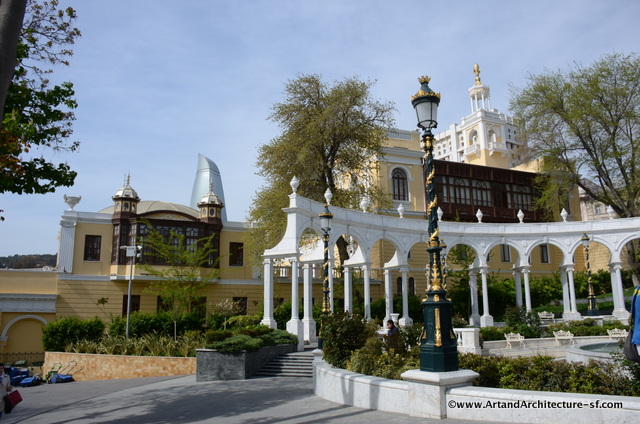 Azerbaijan is truly where East meets Europe and where Russia intruded itself for a while. The architecture just makes your jaw drop. There will be European Palaces built for the original oil barons, and then Persian Architecture, and then a Russian style housing project left from the 1960s. However, the new economy is attracting a new and highly modern type of architecture, that actually works. Some of the modern structures are a tad flashy, but many are a lovely addition to the skyline.
Azerbaijan is truly where East meets Europe and where Russia intruded itself for a while. The architecture just makes your jaw drop. There will be European Palaces built for the original oil barons, and then Persian Architecture, and then a Russian style housing project left from the 1960s. However, the new economy is attracting a new and highly modern type of architecture, that actually works. Some of the modern structures are a tad flashy, but many are a lovely addition to the skyline. 